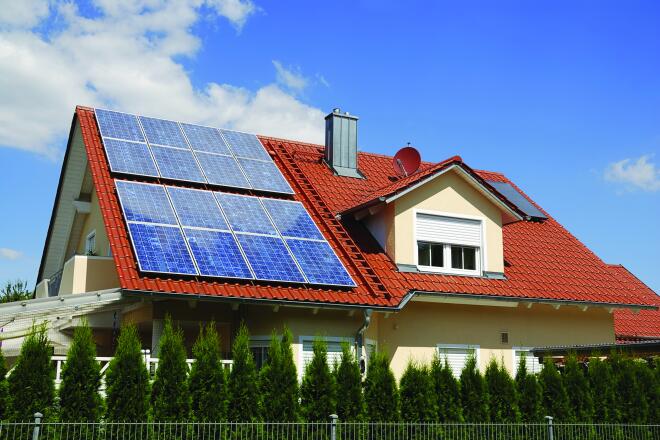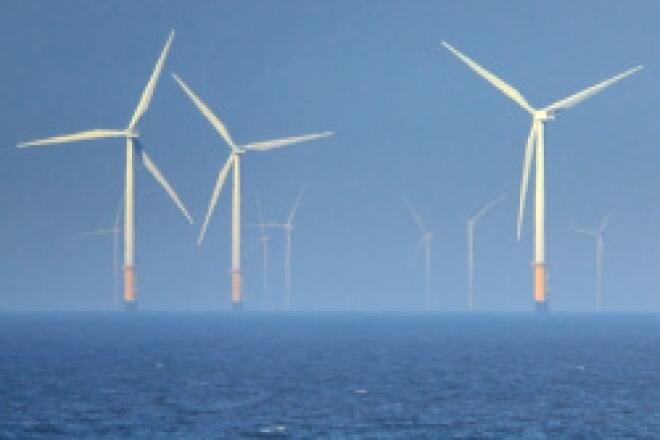
Five Cities and States That Have Committed to Clean Energy
Due to rapidly falling prices, increased interest in being eco-friendly and other factors, renewable energy, most notably solar and wind energy, is growing rapidly in the United States. According to a recent analysis, there are now over two million solar installations in the U.S., a milestone that comes just three years after hitting one million (which itself took 40 years to reach).
Meanwhile, in April, the U.S. Energy Information Administration estimated that renewables had eclipsed the electricity generation from coal by 16 percent – the first time this has ever happened in U.S. history. And projections show that this is the “new normal” – not a passing fad.
While renewable energy already has considerable momentum, there is another developing trend that will have a major impact on the shift to clean energy – state- and city-level mandates.
In the absence of national legislation, elected officials in many U.S. states and cities have led the way to generating more clean, renewable energy. In fact, with the recently signed legislation in Washington State, 20 percent of all Americans now live in places committed to 100-percent clean energy. (And many other cities and states have pending legislation.)
Let’s take a look at five places across the U.S. where clean energy will soon lead the way:
1. Washington State
Following in the steps of Hawaii and California, Washington recently became one of the few states to pass a 100-percent clean energy bill when Governor Jay Inslee signed the bill into law in early May.
Under the new law, which is being heralded for its step-by-step approach, the state's electric utilities must hit three targets by 2045. First, they must eliminate coal-derived electricity by 2025 (it currently comprises 14 percent of the energy mix), followed by 100-percent carbon-neutral energy by 2035 (This leaves room for nuclear, natural gas with carbon capture and potentially other sources).
Finally, the law requires utilities to self-generate 100-percent clean energy by 2045. But, along the way, it also provides incentives for utilities to invest in electric vehicle infrastructure, energy efficiency and programs for lower-income consumers, which makes this bill one of the most practical and consumer-friendly of the early clean energy commitments.
2. Chicago
 In early April of this year, Chicago, the third most populous city in the U.S., made history by becoming the largest U.S. city committed to 100-percent renewable energy.
In early April of this year, Chicago, the third most populous city in the U.S., made history by becoming the largest U.S. city committed to 100-percent renewable energy.
The Chicago City Council voted unanimously to power every building in the metropolis with clean energy by 2035, as well as establishing a fleet of electric buses to replace their current public transportation by 2040, a major achievement that could significantly cut down on carbon emissions and pollution. This momentous decision was backed by the Ready For 100 Chicago Collective, an organization supported by various environment groups such as the Sierra Club and People for Community Recovery.
Chicago has demonstrated a strong motivation for wanting clean energy by encouraging businesses to have renewable clean energy practices and hopes to become one of the greenest cities in the world by involving local community partners in the planning, strategy and implementation of this considerable undertaking.
3. Los Angeles
Not long after Chicago’s announcement, Los Angeles usurped the crown of largest city committed to clean energy. The Southern California city has ramped up its green initiatives considerably with its own Green New Deal, which will expand the already in place Sustainable City pLAn with sweeping pushes for more clean energy.
These significant shifts toward a green future include building a zero-carbon electricity grid, reaching an 80-percent clean energy supply by 2036, creating 400,000 green jobs and requiring all new buildings to be “all electric”. Mayor Garcetti, who has been a significant champion of the movement, said, “L.A. is leading the charge, with a clear vision for protecting the environment and making our economy work for everyone”.
The city projects the Green New Deal will save 1,600 lives and $16 billion in avoidable health care bills.
4. New Mexico
It’s not only large cities and coastal states that have made the commitment to clean energy. New Mexico recently became the third state to pass a bill pledging to generate 100 percent of its energy from carbon-free resources by 2045. This bill is momentous for New Mexico, which had previously generated about 50 percent of the state’s energy from coal.
To mitigate some of the economic damages mining communities may feel from the new policies, the bill includes strategies on replacement power for coal and natural gas plants. It aims to repurpose past coal mines with replacement resources that have smaller environmental impacts.
This is big news for New Mexico. They have had no progress in the field of environmental policy for the past eight years, and this bill will begin to shift the winds in New Mexico to ones of clean energy initiatives.
5. New York State
New York is taking huge strides to combat climate change with its significant new policies dedicated to clean energy. If the current bill is passed, it will be the most “aggressive – and legally binding – clean energy target in the country”.
Earlier this year, New York Governor Andrew Cuomo proposed his own Green New Deal, which would increase New York’s Clean Energy Standard from 50 to 70 percent renewable electricity by 2030 and to 100 percent by 2040.
According to Costa Constantinides, the chair of the Committee for Environmental Protection, implementing this bill will be equivalent to taking one million cars off the road by 2030, and many hope this will significantly improve the air quality of the city and create thousands of middle-class jobs within the city.
Similar bills in the past have not gone through due to opposition of businesses, claiming it puts an undue burden on those that own buildings; however, the support on this bill speaks to how the tides are changing when it comes to supporting environmentally friendly policies.
Conclusion
Some cities have been at the forefront of green policy since its inception; others have been slower to the game and are just now considering clean energy policies. Regardless, all major cities in the U.S. seem to be on the precipice of monumental legislation to generate clean energy.
It's clear that public opinion is shifting in support of environmentally friendly legislation, and support for renewable energy will likely to continue to grow from governments, businesses and citizens alike.
To learn more about the many changes coming to the world of energy and how you might benefit, check out our Evolving World of Energy series on how we get, how we use and how we pay for energy.



